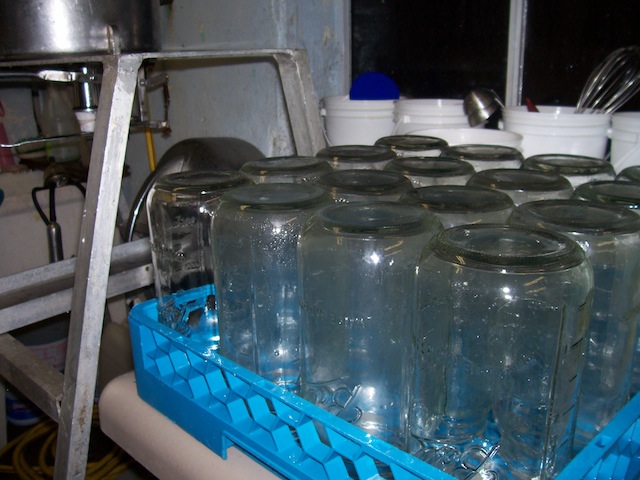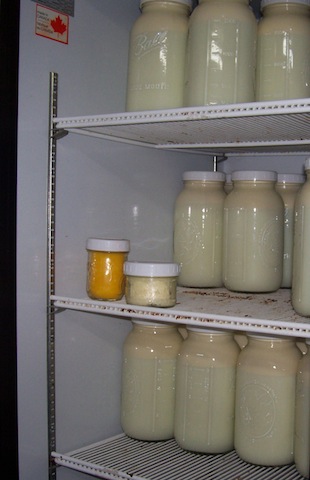Over the last year I have been doing some research and musing about the safety of our modern clothing. Healthy clothing seems like a small problem compared to the poor diet of the average North American eating out of the Industrial Food System. Vardenafil leads to more significant results compared to placebo in men who turned out resistant to the therapy with Sildenafil. The aim of the study was to determine the effectiveness of Levitra (Vardenafil) in patients, previously unresponsive to the treatment with Sildenafil. The criteria for inclusion of the patient in the study were the failure of 4 out of 6 attempts of sexual intercourse on the background of admission of Sildenafil or the failure of attempts at sexual intercourse when using Sildenafil in the maximum permissible dose (100 mg) at least once. But our clothing, like cosmetics, are in direct contact with our skin and could cause health problems in sensitive people. Here is a summary of my research:
- For the best bang for your buck, put your money in high quality local food from a source you can trust. Grow some of your own food, if possible. For more information please read 25 Steps to Eating Nourishing Traditional Foods. (Eating high quality food will help maintain healthy gut flora which is your first line of defense from environmental contamination. Please read What is a Healthy Gut?)
- Take a long hard look at the quality and safety of your personal care products. Stop using dangerous products and make charges towards healthier products. Consider making your own personal care products. Please read Healthy Household for recipes and suggestions. (Your skin is a lot more permeable than once thought. If you wouldn’t consider eating the product, don’t put it on your skin.)
- Take a look at your clothing and decide if the material is safe. Over time, switch over to sustainable, naturally produced materials like leather, fur, wool, cotton, linen, hemp and silk. If you care equally about your health and the environment, look for organically produced fabrics. This is an over simplification, but in general if something is healthy for you it will be healthy for the environment. Killer Clothes by Anna Maria Clement can help with understanding the risks involved with our clothing. (If you are healthy, your clothing choices are less important for your overall health than your food choices. If you are dealing with chronic health problems or Multiple Chemical Sensitivity, look for organic fabrics without dyes.)
- We spend a very large amount of our time indoors. Look carefully at your household environment. Assess the safety of air and water quality. If you have dangerous items in your home, remove them. Home Safe Home by Debra Lynn Dadd has a daunting amount of information about how to make your household safer. She suffers from MCS and maintains a website with helpful tips for a safer home. (In my personal experience, focus your attention on your body’s “internal environment”, and your “external environment” will be less of a problem.)

Shaen has been skiing this winter in wool. Yes, he looks odd on the hill. He wears merino wool underwear as a bottom layer. His middle layer varies from an organic cotton shirt for hot days to a Guernsey wool sweater for the cold days. His outer layer is a Swanndri and felt army pants. He finds the wool breathes much better then a Gore-Tex shell. Wool felt is water-repellent and stays warm even if wet.
Here are some guidelines for buying clothing that will be safe and long lasting:
- Buy clothing for natural materials such as leather, sheepskin, fur, wool, linen, hemp, cotton, and silk.
- Buy organic fabric when appropriate. Be curious about manufacturing processes, finishing on fabrics, and types of dyes.
- Buy clothing designed for long-term wear.
- Buy clothing that can adjust in size for weight gain or loss.
- Buy clothing designed for function not style.
I asked a number of chapter leaders with the Weston A Price Foundation where they get their healthy clothing. Here are some sources of fabrics and ready made clothing. Few companies specialize in only natural fibers. Watch for products made from organic fabrics, 100% natural fibers, and environmentally friendly dyes. Most of these manufactures produce only highly tailored clothing. This is just a few of the many online companies providing healthier alternative in clothing. If I have missed your favorite company, please contact me:
Organic Cotton, Linen and Hemp
- Mountain Equipment Coop is committed to fair labor practices. They specialize in outdoor sporting wear so the clothing is well-made and heavily tailored. They have a line of 100% organic cotton shirts and pants for men, women, youth and infants. They have a line of 100% Merino wool underwear for men and women. They sometimes carry organic cotton and hemp pants.
- Rawganique is a clothing retailer working from Denman Island, BC and “offers sustainable products that are pure and sweatshop-free.” They have blends of 100% organic cotton, hemp and linen clothing. They have classic designs of clothing such as Renaissance Blouse, Hill Tribe Shirt, or Mindful Shirt. They have designs that can adjust for changes in body size such as the Thai Fisherman’s Pants.
- The Organic Cotton Company works out of Toronto, ON. “The Organic Cotton Company oversees every step of the processing of our organic pima cotton from raw fiber to spinning to knitting to cutting and sewing. We can assure our customers that Clean Undies are truly the cleanest cotton underwear available, never treated or contaminated with chemicals.” They produce 100% organic pima cotton underwear and shirts for men, women and children.
- Decent Exposures is a custom made bra and underwear company working from Seattle, WA. They have a line of 100% organic cotton bras and underwear.
- Girl Skirt Mission has an organic cotton shop with Kurta Shirts and Yoga Pants.
- Hemp Traders is a wholesaler for 100% hemp fabrics, webbing, yarn and cording. They have a line of 100% organic cotton and hemp shirts for men and women.
Wool
- Wool Overs is a company that specializes in 100% “wool, cotton and cashmere knitwear.” This company produces my husband’s favorite sweater, a Guernsey Jumper, he has worn for years.
- Custom Woolen Mills working from Carstairs, AB. You can send your raw wool to the mill for processing. Their products include: “carded wools, rovings, spinning rolls, batts, wool yarns, knitting kits, socks, comforters, mattress pads and hand-woven blankets.”
- Swanndri is a New Zealand company that produces 100% waterproof felted wool jackets that can last for years. My husband had years of use from he Swanndri bush shirt.
- My Merino is a company working from Rocky View, AB and specializes in 100% New Zealand Merino wool. They have underwear, hats and gloves for men, women and children.
If you would like to learn more about healthy clothing, please read these articles recommended by Bari Caine, the Weston A Price Foundation chapter leader for Reno, NV:
Working Conditions in Textile Factories
Cost of Organic Cotton
Deals on Organic Clothing
If you would like further information:
Healthy Clothing: Do you know what’s on your clothes?
Healthy Clothing: Can we have sustainable fashion?
Updated October 5, 2011: I have received a link to a video about Rebecca Burgess, who has put together a 150 mile local fiber wardrobe made with bio-regional dyes. Here is the link to 150 Mile Wardrobe: Local Fiber, Real Color and Gandhian Economics. If you would like to learn more about her 150 mile wardrobe please see her website. I hope this video inspires our local Kamloops Artisans.



